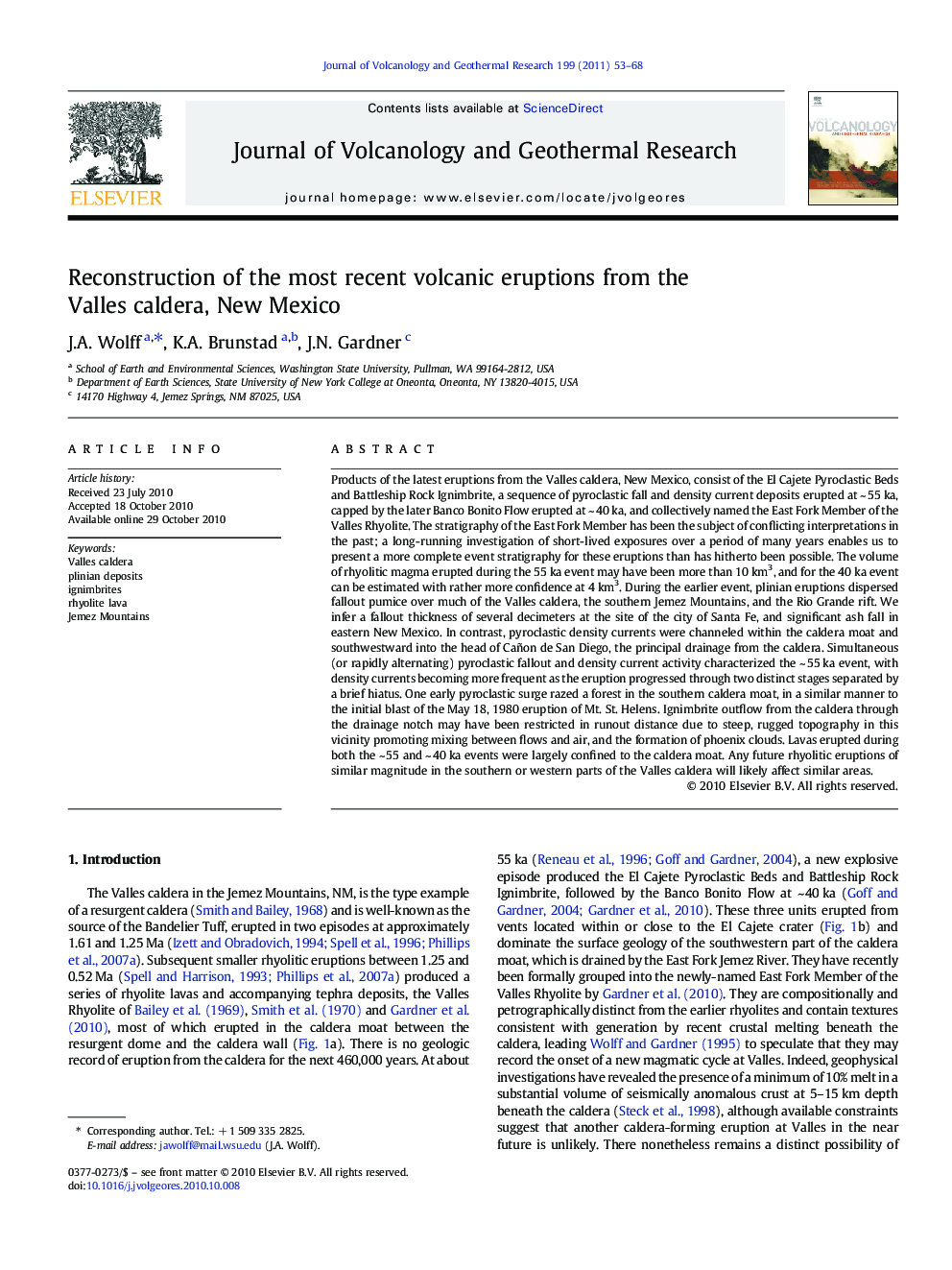| کد مقاله | کد نشریه | سال انتشار | مقاله انگلیسی | نسخه تمام متن |
|---|---|---|---|---|
| 4713939 | 1638410 | 2011 | 16 صفحه PDF | دانلود رایگان |

Products of the latest eruptions from the Valles caldera, New Mexico, consist of the El Cajete Pyroclastic Beds and Battleship Rock Ignimbrite, a sequence of pyroclastic fall and density current deposits erupted at ~ 55 ka, capped by the later Banco Bonito Flow erupted at ~ 40 ka, and collectively named the East Fork Member of the Valles Rhyolite. The stratigraphy of the East Fork Member has been the subject of conflicting interpretations in the past; a long-running investigation of short-lived exposures over a period of many years enables us to present a more complete event stratigraphy for these eruptions than has hitherto been possible. The volume of rhyolitic magma erupted during the 55 ka event may have been more than 10 km3, and for the 40 ka event can be estimated with rather more confidence at 4 km3. During the earlier event, plinian eruptions dispersed fallout pumice over much of the Valles caldera, the southern Jemez Mountains, and the Rio Grande rift. We infer a fallout thickness of several decimeters at the site of the city of Santa Fe, and significant ash fall in eastern New Mexico. In contrast, pyroclastic density currents were channeled within the caldera moat and southwestward into the head of Cañon de San Diego, the principal drainage from the caldera. Simultaneous (or rapidly alternating) pyroclastic fallout and density current activity characterized the ~ 55 ka event, with density currents becoming more frequent as the eruption progressed through two distinct stages separated by a brief hiatus. One early pyroclastic surge razed a forest in the southern caldera moat, in a similar manner to the initial blast of the May 18, 1980 eruption of Mt. St. Helens. Ignimbrite outflow from the caldera through the drainage notch may have been restricted in runout distance due to steep, rugged topography in this vicinity promoting mixing between flows and air, and the formation of phoenix clouds. Lavas erupted during both the ~ 55 and ~ 40 ka events were largely confined to the caldera moat. Any future rhyolitic eruptions of similar magnitude in the southern or western parts of the Valles caldera will likely affect similar areas.
Research highlights
► New stratigraphy of the most recent eruption products from the Valles caldera, New Mexico
► Simultaneous pyroclastic fallout and flow deposition
► New volume estimates
► Implications for future eruptions
Journal: Journal of Volcanology and Geothermal Research - Volume 199, Issues 1–2, 1 January 2011, Pages 53–68